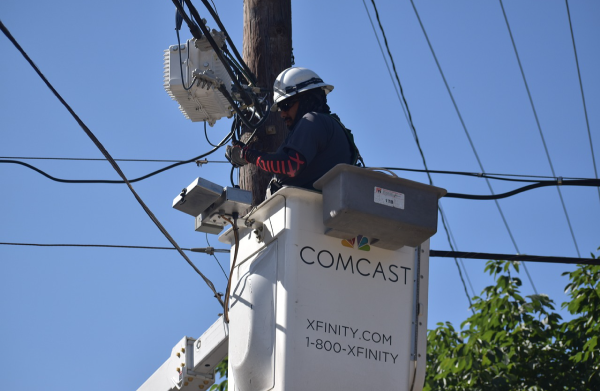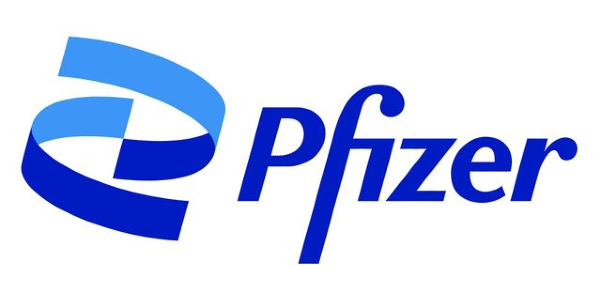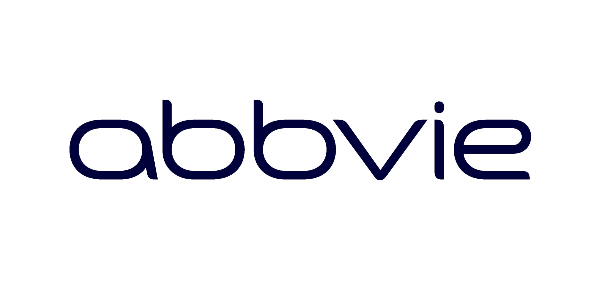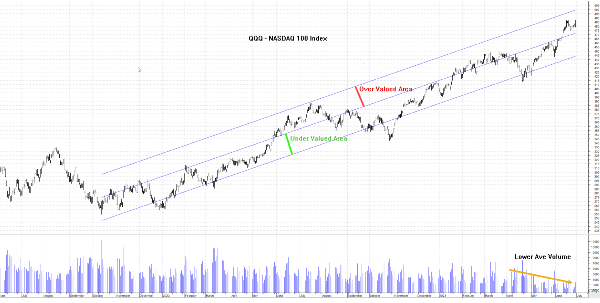Overview
A disciplined approach to assessing telecom stocks will improve investment profitability. Using a standard process to investing in telecoms, we’ll assess the top telecom stocks and see how well they compare.
The Top Telecom Companies
These are the top telecom stocks in the world by market share, customers, and regional dominance.
Read More: The Top Telecom Stocks picked by our Community
- Verizon Communications Inc. (VZ): Verizon is a leading American telecommunications company providing wireless, broadband, and wireline services to consumers, businesses, and government entities. It is the largest wireless carrier in the U.S. with a strong focus on network reliability and innovation.
- AT&T Inc. (T): AT&T is a major American multinational conglomerate holding company, providing telecommunications, media, and technology services globally. It is the second-largest wireless carrier in the U.S. and offers a wide range of services including mobile, broadband, and digital entertainment.
- T-Mobile US Inc. (TMUS): T-Mobile is a prominent American wireless network operator known for its innovative services and competitive pricing. It offers voice, messaging, and data services to customers in the U.S., Puerto Rico, and the U.S. Virgin Islands.

- Comcast Corporation (CMCSA): Comcast is a global media and technology company providing broadband, wireless, and video services. It operates through various segments including residential connectivity, business services, media, studios, and theme parks.
- América Móvil, S.A.B. de C.V. (AMX): América Móvil is a Mexican telecommunications corporation and one of the largest mobile network operators in the world. It offers a wide range of services including fixed-line, mobile, broadband, and digital television across Latin America and internationally.
- Vodafone Group Plc (VOD): Vodafone is a British multinational telecommunications company providing mobile and fixed connectivity services, cloud and edge computing, IoT solutions, and cybersecurity services. It operates in Europe, Africa, and other regions.
- China Mobile Limited (CHL): China Mobile is the world’s largest mobile telecommunications network operator by subscribers. It provides voice, data, and multimedia services, as well as international roaming services, primarily in mainland China, Hong Kong, and Macau.
- Nippon Telegraph and Telephone Corporation (NTT): NTT is a Japanese telecommunications company offering a wide range of services including fixed-line, mobile, broadband, and digital television. It is one of the largest telecommunications companies in the world by revenue.
- Orange S.A. (ORAN): Orange is a French multinational telecommunications company providing fixed telephony, mobile telecommunications, data transmission, and other value-added services. It operates in France, Spain, Africa, and the Middle East.

- Telefonica S.A. (TEF): Telefonica is a Spanish multinational telecommunications company offering mobile and fixed telephony, broadband, and subscription television services. It operates in Europe and Latin America under various brands including Movistar, O2, and Vivo.
2. Analyze Competitive Advantages

- Verizon Communications Inc. (VZ): Verizon’s competitive advantage lies in its extensive network coverage and reputation for reliability. It has one of the most expansive and reliable 4G LTE and 5G networks in the U.S., which helps attract and retain customers.
- AT&T Inc. (T): AT&T’s competitive advantage is its diversified business model. It offers a wide range of services including wireless communications, broadband, digital TV, and advanced business solutions, which helps it maintain a strong market presence4.
- T-Mobile US Inc. (TMUS): T-Mobile’s competitive advantage is its aggressive pricing strategy and innovative service offerings. The company is known for its “Un-carrier” moves, which include unbundling smartphone devices from service plans and offering unlimited data plans
- Comcast Corporation (CMCSA): Comcast’s competitive advantage is its diverse revenue streams. It generates revenue from its broadband services, cable TV, and NBCUniversal, which provides a stable financial foundation.
- América Móvil, S.A.B. de C.V. (AMX): América Móvil’s competitive advantage is its dominant market position in Latin America. It is one of the largest mobile network operators in the region, providing a wide range of telecommunications services.
- Vodafone Group Plc (VOD): Vodafone’s competitive advantage is its global presence. It operates in multiple regions including Europe, Africa, and Asia, which allows it to leverage economies of scale and offer competitive pricing.
- China Mobile Limited (CHL): China Mobile’s competitive advantage is its massive subscriber base. It is the world’s largest mobile telecommunications network operator by subscribers, which provides significant economies of scale.
- Nippon Telegraph and Telephone Corporation (NTT): NTT’s competitive advantage is its extensive research and development capabilities. The company invests heavily in R&D to develop new technologies and solutions, which helps it stay ahead of competitors.
- Orange S.A. (ORAN): Orange’s competitive advantage is its pioneering role in fiber deployment. The company has been a leader in deploying fiber-optic networks, which provides high-speed and reliable internet services to its customers.
- Telefonica S.A. (TEF): Telefonica’s competitive advantage is its strong presence in both Europe and Latin America. The company offers a wide range of telecommunications services and has a significant market share in these regions.
3. Assess Fiscal Discipline

1. Verizon Communications Inc. (VZ)
- Debt Levels: Verizon has a total debt of $152.4 billion, with a debt-to-equity ratio of 156.2%.
- Cash Flow: The company has cash and short-term investments of $2.5 billion.
- Profitability: Verizon’s EBIT is $30.3 billion, with an interest coverage ratio of 5.
2. AT&T Inc. (T)
3. T-Mobile US Inc. (TMUS)
4. Comcast Corporation (CMCSA)
5. América Móvil, S.A.B. de C.V. (AMX)
- Debt Levels: América Móvil’s financial details are not fully available, but the company has shown strong revenue growth and profitability.
- Cash Flow: The company has a robust cash flow, contributing to its strong financial position.
- Profitability: América Móvil has achieved significant profitability, with a focus on expanding its market presence.
6. Vodafone Group Plc (VOD)
- Debt Levels: Vodafone has a total debt of €48.8 billion, with a debt-to-equity ratio of 80.1%.
- Cash Flow: The company has cash and short-term investments of €3.2 billion.
- Profitability: Vodafone’s EBIT is €3.5 billion, with an interest coverage ratio of 2.
7. China Mobile Limited (CHL)
- Debt Levels: China Mobile has a liabilities-to-assets ratio of 32.5%, indicating manageable debt levels.
- Cash Flow: The company has maintained a strong cash flow, contributing to its robust financial position.
- Profitability: China Mobile has achieved record-high net profit and strong revenue growth.
8. Nippon Telegraph and Telephone Corporation (NTT)
- Debt Levels: NTT has a total debt of ¥1,699 billion, with a debt-to-equity ratio of 34.7%.
- Cash Flow: The company has strong cash flows from operating activities, amounting to ¥3,010 billion.
- Profitability: NTT’s EBIT is ¥1,768 billion, with a solid interest coverage ratio.
9. Orange S.A. (ORAN)
- Debt Levels: Orange has a total debt of €38.2 billion, with a debt-to-equity ratio of 120.6%.
- Cash Flow: The company has cash and short-term investments of €7.8 billion.
- Profitability: Orange’s EBIT is €3.2 billion, with an interest coverage ratio of 2.2.
10. Telefonica S.A. (TEF)
- Debt Levels: Telefonica has a total debt of €38.2 billion, with a debt-to-equity ratio of 120.6%.
- Cash Flow: The company has cash and short-term investments of €7.8 billion.
- Profitability: Telefonica’s EBIT is €3.2 billion, with an interest coverage ratio of 2.2.
4. Adaptability to Market Conditions
Verizon Communications Inc. (VZ)
Verizon has shown strong adaptability through its strategic investments in 5G technology and fiber-optic networks. The company has a robust market presence and continues to innovate with new network architectures and technologies. However, challenges in wireless equipment revenue signal a need for strategic adjustments.
AT&T Inc. (T)
AT&T has demonstrated adaptability by focusing on 5G and fiber expansion. The company has managed to maintain a robust service revenue stream despite competitive pressures. Strategic investments in network upgrades and cost management have positioned AT&T for future growth.
T-Mobile US Inc. (TMUS)
T-Mobile’s adaptability is evident in its aggressive expansion into the fixed-wireless broadband market and its innovative “Un-carrier” initiatives. The company’s merger with Sprint has expanded its customer base and network capabilities, allowing it to offer competitive services and pricing.
Comcast Corporation (CMCSA)
Comcast has shown adaptability through its strategic acquisitions and investments in content and technology. The company has diversified its revenue streams with broadband, wireless, and video services, which helps it navigate market fluctuations.
América Móvil, S.A.B. de C.V. (AMX)
América Móvil has demonstrated adaptability by expanding its services and maintaining a dominant market position in Latin America. The company has invested in new technologies and services, such as mobile payment solutions and IoT, to stay competitive.
Vodafone Group Plc (VOD)
Vodafone has shown adaptability by strengthening customer experience and operational simplicity. The company has transitioned to volume-based pricing and partnered with other firms to expedite transformation. Vodafone’s global presence also allows it to leverage economies of scale.
China Mobile Limited (CHL)
China Mobile has demonstrated adaptability through its significant investments in research and development. The company has built one of the world’s largest and most advanced wireless networks, covering over 99% of the Chinese population. It is also focusing on 5G technology and IoT.
Nippon Telegraph and Telephone Corporation (NTT)
NTT has shown adaptability by integrating its own technologies with those of other companies. This strategic synergy has propelled efficient technology dissemination and fueled business expansion. NTT’s investments in new technologies, such as AI and IoT, also highlight its responsiveness to market changes.
Orange S.A. (ORAN)
Orange has demonstrated adaptability by focusing on fiber deployment and enhancing its digital services. The company has also increased its dividend and maintained a strong financial position, which helps it navigate market fluctuations.
Telefonica S.A. (TEF)
Telefonica has shown adaptability by investing in new technologies and expanding its services. The company has a strong presence in both Europe and Latin America and has focused on digital transformation to stay competitive.
5. Growth and Expansion Plans

Verizon Communications Inc. (VZ)
Verizon is focusing on expanding its 5G network, aiming to cover 200 million people with its 5G Ultra Wideband by the end of 2023. The company is also investing in fixed wireless and Fios products, with significant broadband net additions. Verizon’s growth strategy includes 5G mobility, nationwide broadband, mobile edge compute, and business solutions.
AT&T Inc. (T)
AT&T plans to double its fiber footprint to over 30 million locations and enhance its 5G network to cover more than 200 million people by the end of 2023. The company is investing heavily in 5G and fiber, aiming to become America’s best broadband provider. AT&T’s strategy includes sustainable revenue and earnings growth driven by 5G and fiber.
T-Mobile US Inc. (TMUS)
T-Mobile is focusing on expanding its 5G network, covering 98% of Americans with Ultra Capacity 5G. The company has also acquired Mint Mobile and Ultra Mobile to enhance its market presence. T-Mobile’s growth strategy includes industry-leading customer growth, profitability, and cash flow.
Comcast Corporation (CMCSA)
Comcast is expanding its next-generation broadband network to underserved and rural areas. The company plans to continue its network expansion, aiming to make its network available to 1 million new homes and businesses annually. Comcast is also investing in streaming services, 5G deployment, and international market expansion.
América Móvil, S.A.B. de C.V. (AMX)
América Móvil is focusing on expanding its telecommunications services in Latin America and internationally. The company is investing in data centers, data administration, hosting services, and value-added services. América Móvil aims to enhance its broadband services and IT solutions for residential and corporate clients.
Vodafone Group Plc (VOD)
Vodafone’s growth strategy focuses on expanding its connectivity markets in Europe and mobile data and payments in Africa. The company is investing in digital services, the Internet of Things (IoT), and financial services. Vodafone aims to achieve stable growth in Europe and Africa, leveraging its core connectivity business.
China Mobile Limited (CHL)
China Mobile is driving its digital-intelligent transformation through its “5G+” plan and the comprehensive development of its CHBN markets. The company is focusing on expanding its smart home application services, DICT services, and new information service businesses. China Mobile aims to achieve favorable growth in its telecommunications services.
Nippon Telegraph and Telephone Corporation (NTT)
NTT is focusing on its “IOWN” initiative, which aims to achieve low power consumption and enhance its network infrastructure. The company is investing in fiber-optic access, broadband network upgrades, and digital transformation. NTT’s strategy includes expanding its global solutions business and achieving carbon neutrality.
Orange S.A. (ORAN)
Orange’s “Lead the Future” plan focuses on generating value from its core business and growing sustainably in Europe, Africa, and the Middle East. The company is investing in fiber and 5G deployment, cybersecurity, and next-generation connectivity solutions. Orange aims to enhance its position in high-growth regions and digital services.
Telefonica S.A. (TEF)
Telefonica’s “GPS” plan targets growth, profitability, and sustainability. The company aims to achieve annual revenue growth of approximately 1% and EBITDA growth of 2% by 2026. Telefonica is focusing on expanding its B2C and B2B segments, enhancing efficiencies, and maintaining a differential profile with lower investment.
6. Dividend Yields
Verizon has a dividend yield of 6.53%. The company has a strong track record of dividend payments, with an annual dividend of $2.66 per share.
AT&T offers a dividend yield of 5.78%. The annual dividend is $1.11 per share, and the company has a history of consistent dividend payments.
T-Mobile has a relatively lower dividend yield of 1.36%. The annual dividend is $2.60 per share.
Comcast provides a dividend yield of 3.15%. The annual dividend is $1.24 per share.
América Móvil has a dividend yield of 2.76%. The company pays an annual dividend of $0.47 per share.
Vodafone offers a high dividend yield of 10.15%. The annual dividend is $0.96 per share.
China Mobile has a dividend yield of 6.73%. The company has a strong dividend history, with a well-covered yield.
[Nippon Telegraph and Telephone has a dividend yield of **3.54%**. The company has a consistent dividend payment history.
Orange provides a dividend yield of 7.03%. The annual dividend is $0.78 per share.
Telefonica offers a dividend yield of 7.37%. The annual dividend is $0.32 per share.
Final Thoughts
The telecommunications sector presents a diverse array of investment opportunities, each with its unique strengths and challenges. By employing a disciplined approach to assessing telecom stocks, investors can better navigate this dynamic industry and identify companies with strong competitive advantages, fiscal discipline, and growth potential.
Verizon and AT&T stand out for their extensive network coverage and diversified business models, respectively. T-Mobile’s innovative service offerings and aggressive pricing strategy make it a formidable competitor. Comcast’s diverse revenue streams provide a stable financial foundation, while América Móvil’s dominant market position in Latin America offers significant growth prospects.
Vodafone’s global presence, China Mobile’s massive subscriber base, and NTT’s extensive research and development capabilities further highlight the varied strengths within the sector. Orange’s pioneering role in fiber deployment and Telefonica’s strong presence in both Europe and Latin America underscore the importance of strategic positioning and market reach.
Ultimately, a thorough analysis of each company’s competitive advantages, fiscal discipline, and market positioning will enable investors to make informed decisions and capitalize on the opportunities within the telecommunications sector.





























Cover Image by StockSnap from Pixabay
Overview
A disciplined approach to assessing telecom stocks will improve investment profitability. Using a standard process to investing in telecoms, we’ll assess the top telecom stocks and see how well they compare.
The Top Telecom Companies
These are the top telecom stocks in the world by market share, customers, and regional dominance.
Image by F. Muhammad from Pixabay
Image by Heiko Behn from Pixabay
2. Analyze Competitive Advantages
Image by Tim Bastian from Pixabay
3. Assess Fiscal Discipline
Image by Charles Thompson from Pixabay
1. Verizon Communications Inc. (VZ)
2. AT&T Inc. (T)
3. T-Mobile US Inc. (TMUS)
4. Comcast Corporation (CMCSA)
5. América Móvil, S.A.B. de C.V. (AMX)
6. Vodafone Group Plc (VOD)
7. China Mobile Limited (CHL)
8. Nippon Telegraph and Telephone Corporation (NTT)
9. Orange S.A. (ORAN)
10. Telefonica S.A. (TEF)
4. Adaptability to Market Conditions
Verizon Communications Inc. (VZ)
Verizon has shown strong adaptability through its strategic investments in 5G technology and fiber-optic networks. The company has a robust market presence and continues to innovate with new network architectures and technologies. However, challenges in wireless equipment revenue signal a need for strategic adjustments.
AT&T Inc. (T)
AT&T has demonstrated adaptability by focusing on 5G and fiber expansion. The company has managed to maintain a robust service revenue stream despite competitive pressures. Strategic investments in network upgrades and cost management have positioned AT&T for future growth.
T-Mobile US Inc. (TMUS)
T-Mobile’s adaptability is evident in its aggressive expansion into the fixed-wireless broadband market and its innovative “Un-carrier” initiatives. The company’s merger with Sprint has expanded its customer base and network capabilities, allowing it to offer competitive services and pricing.
Comcast Corporation (CMCSA)
Comcast has shown adaptability through its strategic acquisitions and investments in content and technology. The company has diversified its revenue streams with broadband, wireless, and video services, which helps it navigate market fluctuations.
América Móvil, S.A.B. de C.V. (AMX)
América Móvil has demonstrated adaptability by expanding its services and maintaining a dominant market position in Latin America. The company has invested in new technologies and services, such as mobile payment solutions and IoT, to stay competitive.
Vodafone Group Plc (VOD)
Vodafone has shown adaptability by strengthening customer experience and operational simplicity. The company has transitioned to volume-based pricing and partnered with other firms to expedite transformation. Vodafone’s global presence also allows it to leverage economies of scale.
China Mobile Limited (CHL)
China Mobile has demonstrated adaptability through its significant investments in research and development. The company has built one of the world’s largest and most advanced wireless networks, covering over 99% of the Chinese population. It is also focusing on 5G technology and IoT.
Nippon Telegraph and Telephone Corporation (NTT)
NTT has shown adaptability by integrating its own technologies with those of other companies. This strategic synergy has propelled efficient technology dissemination and fueled business expansion. NTT’s investments in new technologies, such as AI and IoT, also highlight its responsiveness to market changes.
Orange S.A. (ORAN)
Orange has demonstrated adaptability by focusing on fiber deployment and enhancing its digital services. The company has also increased its dividend and maintained a strong financial position, which helps it navigate market fluctuations.
Telefonica S.A. (TEF)
Telefonica has shown adaptability by investing in new technologies and expanding its services. The company has a strong presence in both Europe and Latin America and has focused on digital transformation to stay competitive.
5. Growth and Expansion Plans
Image by LATUPEIRISSA from Pixabay
Verizon Communications Inc. (VZ)
Verizon is focusing on expanding its 5G network, aiming to cover 200 million people with its 5G Ultra Wideband by the end of 2023. The company is also investing in fixed wireless and Fios products, with significant broadband net additions. Verizon’s growth strategy includes 5G mobility, nationwide broadband, mobile edge compute, and business solutions.
AT&T Inc. (T)
AT&T plans to double its fiber footprint to over 30 million locations and enhance its 5G network to cover more than 200 million people by the end of 2023. The company is investing heavily in 5G and fiber, aiming to become America’s best broadband provider. AT&T’s strategy includes sustainable revenue and earnings growth driven by 5G and fiber.
T-Mobile US Inc. (TMUS)
T-Mobile is focusing on expanding its 5G network, covering 98% of Americans with Ultra Capacity 5G. The company has also acquired Mint Mobile and Ultra Mobile to enhance its market presence. T-Mobile’s growth strategy includes industry-leading customer growth, profitability, and cash flow.
Comcast Corporation (CMCSA)
Comcast is expanding its next-generation broadband network to underserved and rural areas. The company plans to continue its network expansion, aiming to make its network available to 1 million new homes and businesses annually. Comcast is also investing in streaming services, 5G deployment, and international market expansion.
América Móvil, S.A.B. de C.V. (AMX)
América Móvil is focusing on expanding its telecommunications services in Latin America and internationally. The company is investing in data centers, data administration, hosting services, and value-added services. América Móvil aims to enhance its broadband services and IT solutions for residential and corporate clients.
Vodafone Group Plc (VOD)
Vodafone’s growth strategy focuses on expanding its connectivity markets in Europe and mobile data and payments in Africa. The company is investing in digital services, the Internet of Things (IoT), and financial services. Vodafone aims to achieve stable growth in Europe and Africa, leveraging its core connectivity business.
China Mobile Limited (CHL)
China Mobile is driving its digital-intelligent transformation through its “5G+” plan and the comprehensive development of its CHBN markets. The company is focusing on expanding its smart home application services, DICT services, and new information service businesses. China Mobile aims to achieve favorable growth in its telecommunications services.
Nippon Telegraph and Telephone Corporation (NTT)
NTT is focusing on its “IOWN” initiative, which aims to achieve low power consumption and enhance its network infrastructure. The company is investing in fiber-optic access, broadband network upgrades, and digital transformation. NTT’s strategy includes expanding its global solutions business and achieving carbon neutrality.
Orange S.A. (ORAN)
Orange’s “Lead the Future” plan focuses on generating value from its core business and growing sustainably in Europe, Africa, and the Middle East. The company is investing in fiber and 5G deployment, cybersecurity, and next-generation connectivity solutions. Orange aims to enhance its position in high-growth regions and digital services.
Telefonica S.A. (TEF)
Telefonica’s “GPS” plan targets growth, profitability, and sustainability. The company aims to achieve annual revenue growth of approximately 1% and EBITDA growth of 2% by 2026. Telefonica is focusing on expanding its B2C and B2B segments, enhancing efficiencies, and maintaining a differential profile with lower investment.
6. Dividend Yields
Verizon has a dividend yield of 6.53%. The company has a strong track record of dividend payments, with an annual dividend of $2.66 per share.
AT&T offers a dividend yield of 5.78%. The annual dividend is $1.11 per share, and the company has a history of consistent dividend payments.
T-Mobile has a relatively lower dividend yield of 1.36%. The annual dividend is $2.60 per share.
Comcast provides a dividend yield of 3.15%. The annual dividend is $1.24 per share.
América Móvil has a dividend yield of 2.76%. The company pays an annual dividend of $0.47 per share.
Vodafone offers a high dividend yield of 10.15%. The annual dividend is $0.96 per share.
China Mobile has a dividend yield of 6.73%. The company has a strong dividend history, with a well-covered yield.
[Nippon Telegraph and Telephone has a dividend yield of **3.54%**. The company has a consistent dividend payment history.
Orange provides a dividend yield of 7.03%. The annual dividend is $0.78 per share.
Telefonica offers a dividend yield of 7.37%. The annual dividend is $0.32 per share.
Final Thoughts
The telecommunications sector presents a diverse array of investment opportunities, each with its unique strengths and challenges. By employing a disciplined approach to assessing telecom stocks, investors can better navigate this dynamic industry and identify companies with strong competitive advantages, fiscal discipline, and growth potential. Verizon and AT&T stand out for their extensive network coverage and diversified business models, respectively. T-Mobile’s innovative service offerings and aggressive pricing strategy make it a formidable competitor. Comcast’s diverse revenue streams provide a stable financial foundation, while América Móvil’s dominant market position in Latin America offers significant growth prospects. Vodafone’s global presence, China Mobile’s massive subscriber base, and NTT’s extensive research and development capabilities further highlight the varied strengths within the sector. Orange’s pioneering role in fiber deployment and Telefonica’s strong presence in both Europe and Latin America underscore the importance of strategic positioning and market reach. Ultimately, a thorough analysis of each company’s competitive advantages, fiscal discipline, and market positioning will enable investors to make informed decisions and capitalize on the opportunities within the telecommunications sector.